In the latest installment of our Galaxy S9 comparison series we pit the cameras of Apple's iPhone X against those Samsung built into its new Galaxy S9+ flagship. Find out which smartphone comes out on top in this video.
The S9+ is Samsung's second flagship device to feature dual cameras, the first being 2017's Note 8. The telephoto lens is pretty much identical to the one on last year's model, but the wide-angle lens on both the S9 and S9+ feature something we've never seen before in a smartphone — a dual aperture system that works by automatically switching between two f-stop modes to adapt to different lighting conditions.
In practice, the f/1.5 aperture mode lets in more light for cleaner lowlight images, and the f/2.4 mode results in sharper photos. The S9+ will automatically choose the right aperture, unless you're in Pro mode.
By comparison, the iPhone X's wide angle lens sports an f/1.8 aperture, somewhere between the two aperture choices on the S9+. The telephoto lenses on both phones are extremely similar, and all of the rear lenses include optical image stabilization.
The selfie camera on the Samsung lets in more light and has higher resolution than the 7 megapixel, f/2.2 front-facing shooter on the iPhone.
Starting with a telephoto image with Portrait and live focus modes enabled, the background in the Samsung image is noticeably more blurry than that of the X. It also looks more saturated, but the X's photo definitely looks more accurate in terms of color reproduction. The S9+ has more detail as well.
Now with the wide angle lens, the S9+ exposed very well in auto mode, while the X was a bit too dark. Even though the S9+ exposed brighter, it crushes the detail in the dark areas like the hair. Both phones look extremely similar in terms of detail.
We manually chose the f/2.4 aperture mode on the Samsung, and for some reason, Pro mode would underexpose the image every single time. We saw the same result in f/1.5 mode as well, including some loss of detail and sharpness. We adjusted the exposure compensation setting to get the S9+ to expose brighter, but we noticed that the clouds were blown out. We went into the settings and discovered that HDR doesn't work in Pro mode, so don't use it if you're taking photos against a bright background.
Here, we used the telephoto lenses, and noticed the X had more contrast, but the S9+ looked more true to what we saw in real life. The detail between the two is extremely similar.
Switching to the wide lenses, the X has more saturation, as you can tell by the blue signs. Switching the S9+ to f/1.5 mode, we can tell that the background gets slightly blurrier, but we also lose detail in the tree. So if you're in good lighting, don't use f/1.5 mode.
Moving onto selfies using Portrait and Focus modes, the S9+'s lens is so wide that it seems to distort the body, making the subject's head look small.
The X blurs the foreground and the background, which is the effect you get with a professional camera at a fast aperture. The Samsung however, only blurs the background. Detail looks very similar, but the S9+ doesn't blur as much of the hair, which looks much better.
Now switching to Portrait and Focus modes, we notice that the S9+ has a stronger blur effect. We can also see that the X struggles to keep the blur amount consistent near the ear.
The S9+ does a better job at maintaining highlight details outside compared to the X, which also seemed to push the white balance a bit too warm. The Samsung has more detail as well.
For low light, we started the Samsung off with f/2.4 aperture mode. The X was more color accurate in dimly lit scenes. The S9+ definitely had more noise in this mode, but it seemed to boast more detail than the X.
Switching to f/1.5 mode dramatically reduced the noise, but reduced detail. Either way, the X still lacked detail compared to its rival.
The Samsung phone actually dropped its shutter speed to an extremely low 1/8th of a second in both modes in order to preserve detail. This will undoubtedly cause motion blur if the subject moves at all. We manually raised the shutter speed to 1/30th of a second to help with this issue, but doing so forced the ISO setting into manual.
Switching to the telephoto lenses, the S9+ performed much better in every single way. We can really see a huge difference in detail.
Testing portrait and live focus modes, the iPhone automatically used flash, whereas the Samsung didn't, and it totally ruined the photo.
Taking a selfie in auto mode, the S9+ turned its shutter speed down so low that it came out blurry. The X chose to keep its shutter speed high, which made the image darker, but kept things sharp.
Using flash, the Samsung's image was no longer blurry, but the face was distractingly bright compared to the background. The X did a good job of balancing the brightness, but it was still a bit underexposed. Using the rear cameras and flash, the S9+ has much more detail, but you still get that distracting flash effect.
Finally, we switched over to the telephoto lenses, and although the S9+ looked sharper, it appeared over-sharpened due to the bright flash effect. The X looks much more pleasant and balanced, despite the loss in detail.
Both flagship devices have extremely good cameras, and each have their own strengths and weaknesses. We'll leave it up to you to decide which are more important for your personal shooting style.
 AppleInsider Staff
AppleInsider Staff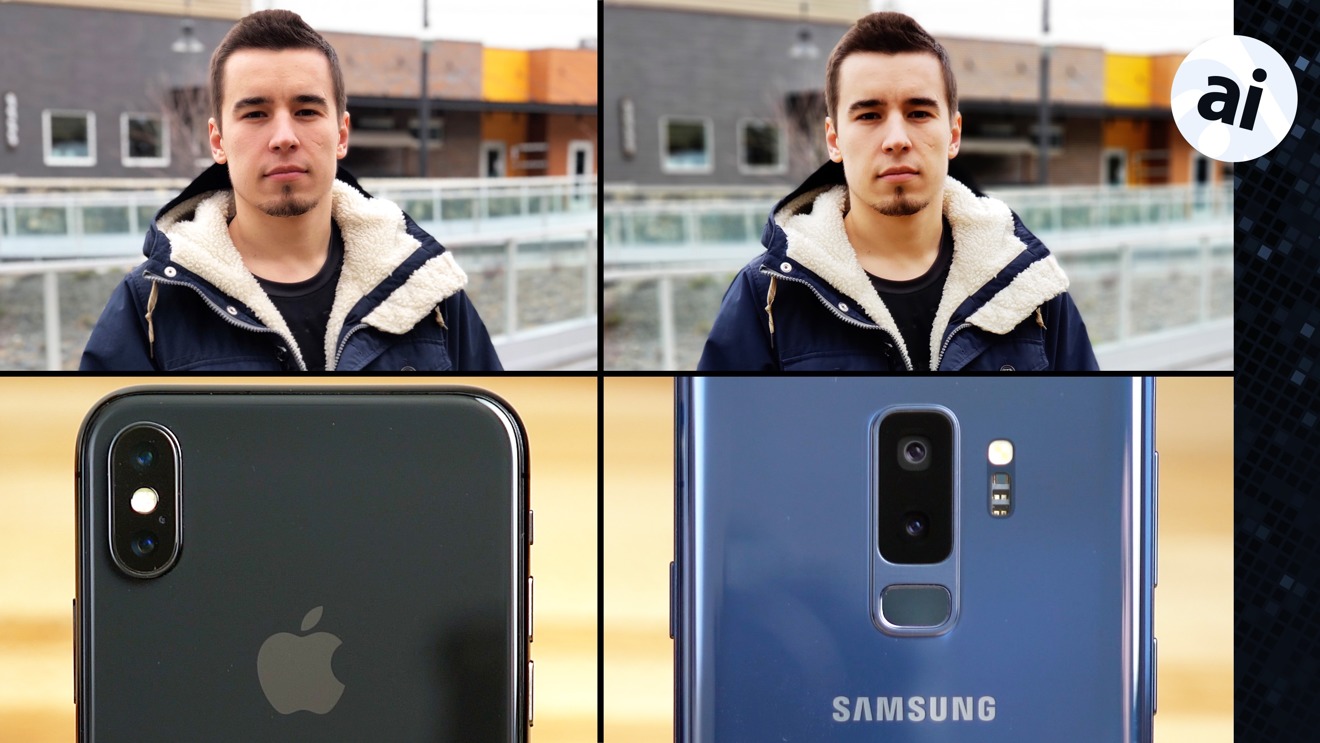

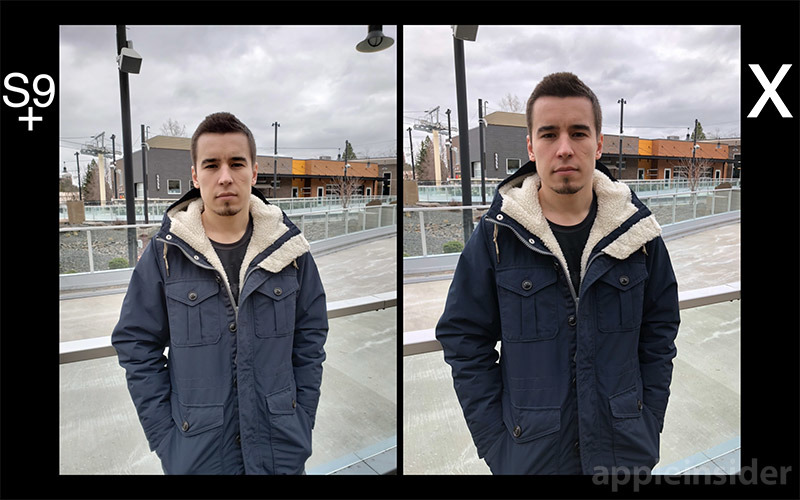
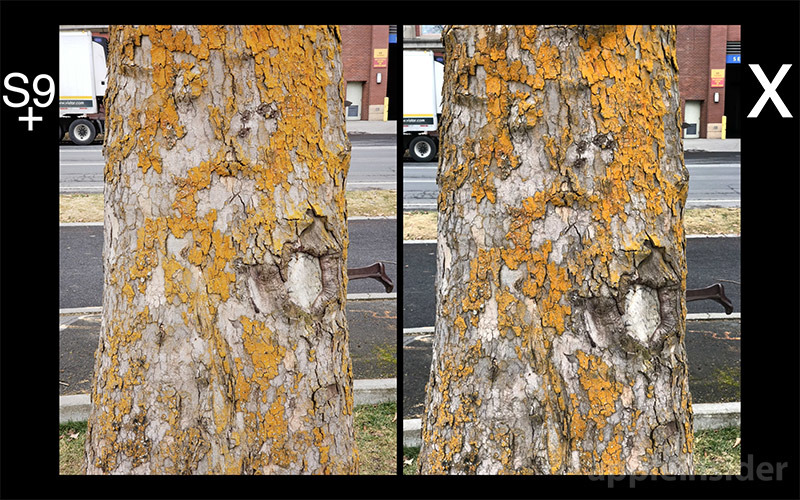
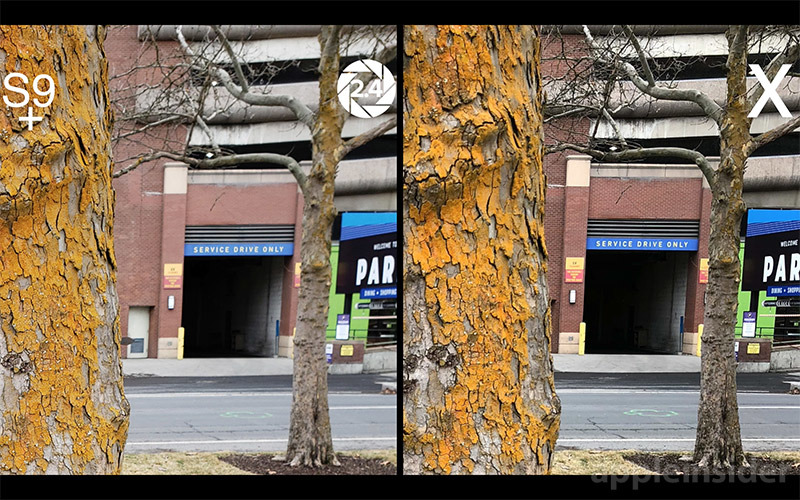
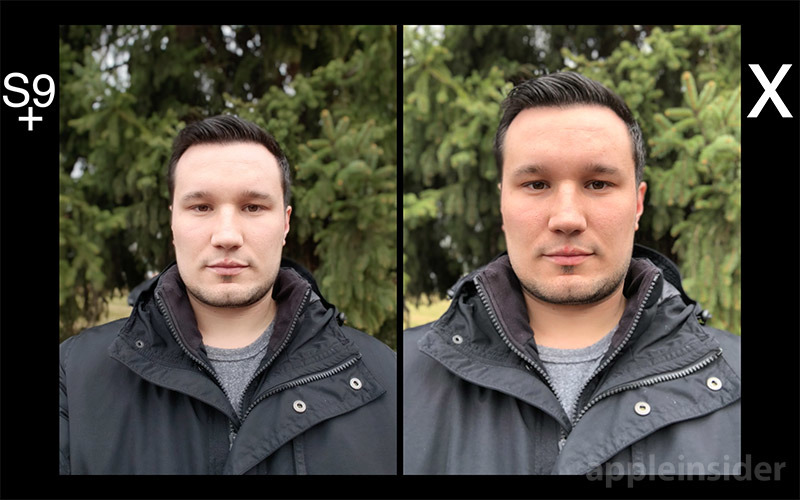

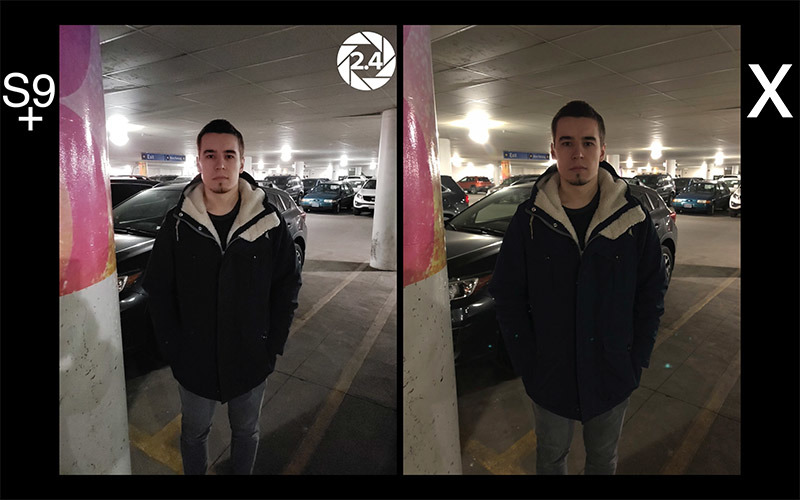
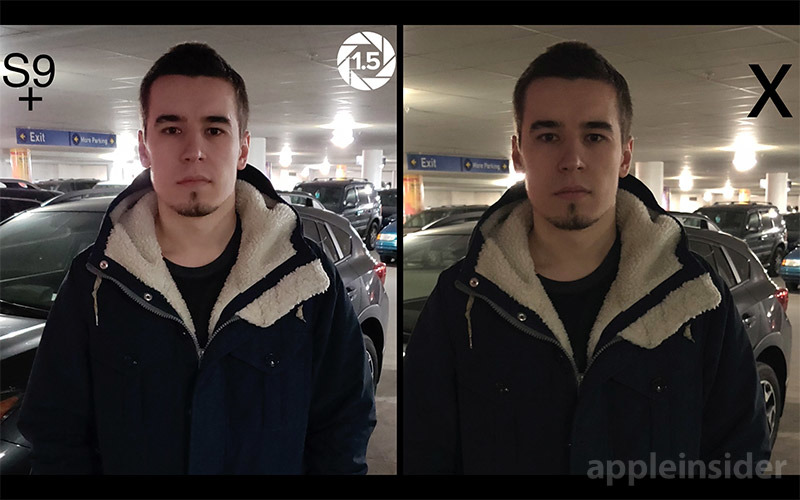

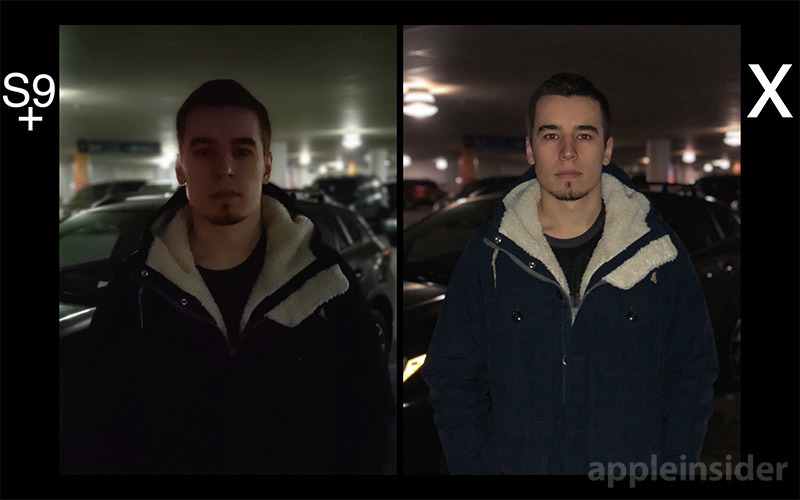
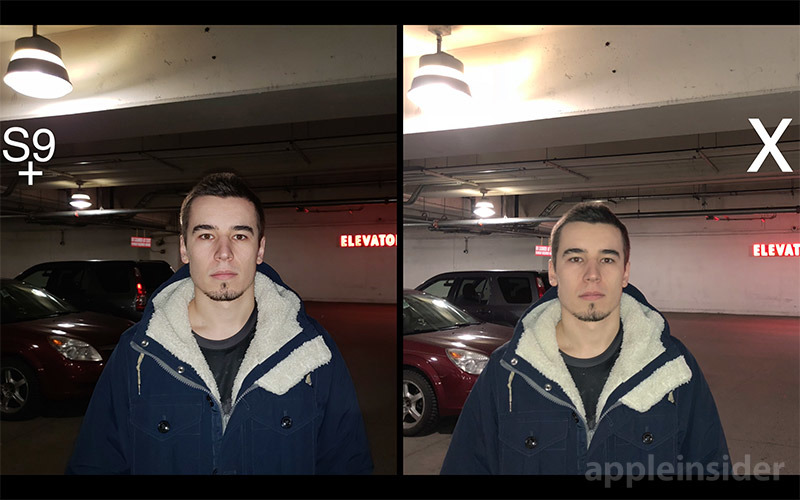







-m.jpg)





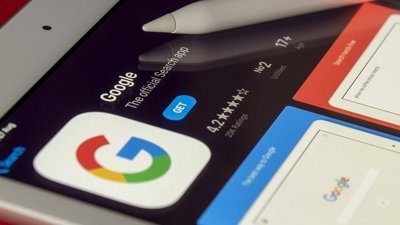
 Marko Zivkovic
Marko Zivkovic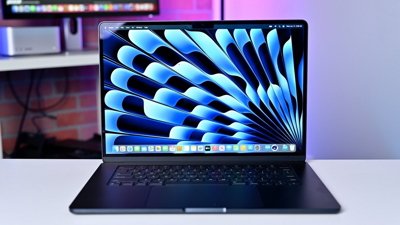
 Wesley Hilliard
Wesley Hilliard
 Christine McKee
Christine McKee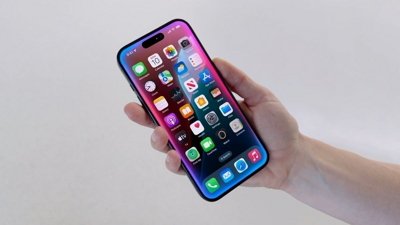
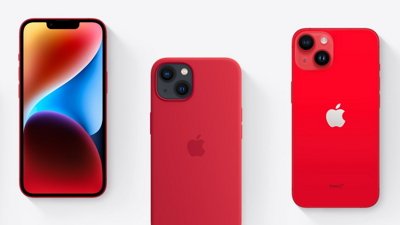
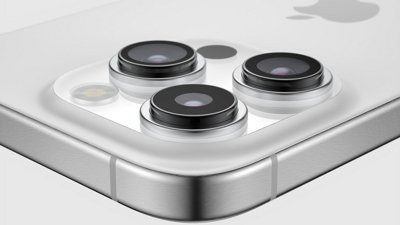
 Malcolm Owen
Malcolm Owen
 William Gallagher
William Gallagher
 Andrew O'Hara
Andrew O'Hara







27 Comments
Just looking at the photos here rather than downloading and comparing the full-res pictures, I'd have to go with the iPhone X in most circumstances but there are clearly some photos above where the S9's greater aperture and telephoto options won the day, but when it comes to flash and good natural lighting, the iPhone X seems to be the better option. I'm astonished and rather disturbed to see that the S9 distorts the head size so much. For me, that flaw is great enough that it would toss it out of consideration, even though it performs pretty well in other ways.
I have to give this one to Apple overall, though depending on your use they are both excellent smartphone cameras. Clearly room for improvement on both devices.
I would love to know the sensor sizes on the phones. How about a comparison of a he regular S9 to an iPhone8+?
Two positive reviews/comparisons of the Samsung Galaxy S9+ means an anti-Samsung editorial is coming from DED.
I’ve personally lost all confidence in the iPhones ability to take great photos. Both my 7plus and the wife’s 7 have this really annoying ‘feature’ of struggling to keep focus on a subject. Keeps zooming in and out of focus on the subject just when you want to take the shot. Mostly takes it ok in the end but how annoying is the usability. Keeping my phone steady tonight in a well lit restaurant it struggled to lock onto a plate of food 10 times! Ridiculous. Wife’s phone was the same. She is on iOS 10, me 11.
My last iPhone did it too. (6plus). Not every time but enough to be noticeable. More so in lower light.have friends at work who have noticed it too, some more than others. Bizarre. Not sure if the X suffers from this issue or not.
It getting to to the point where I’m considering whether it’s worth switching. I constantly hear that the pixel 2 camera is so much better than the iPhone , even the X. And a comparison on the verge put the S9 camera up there with the best of them.